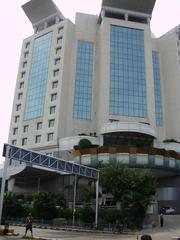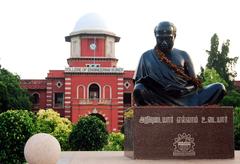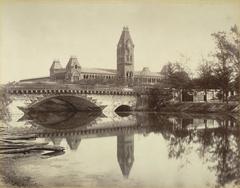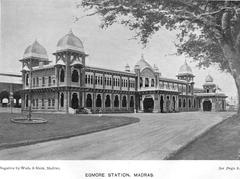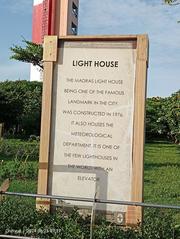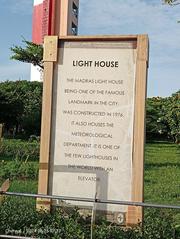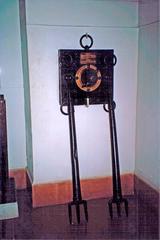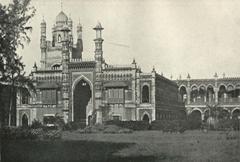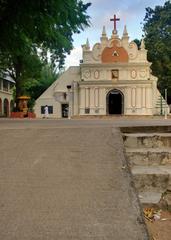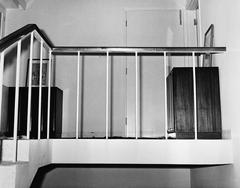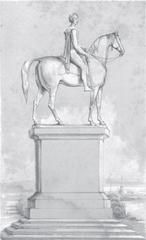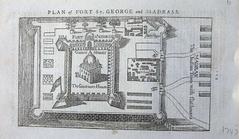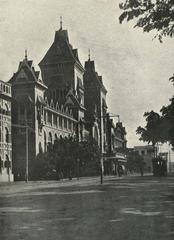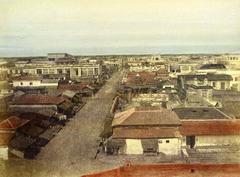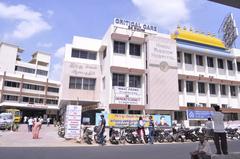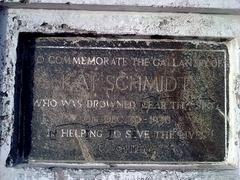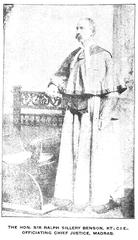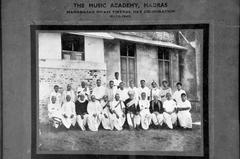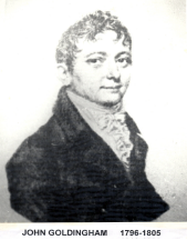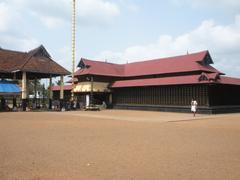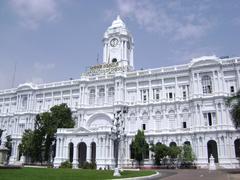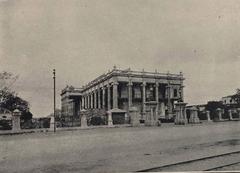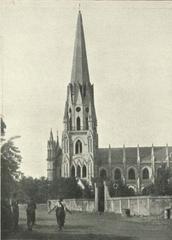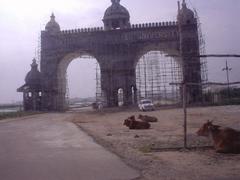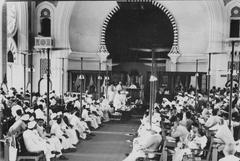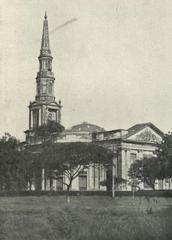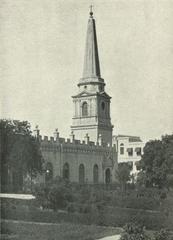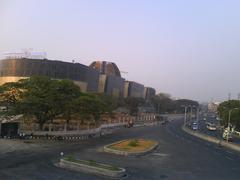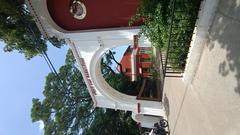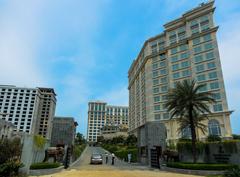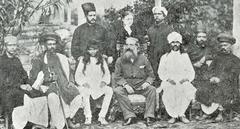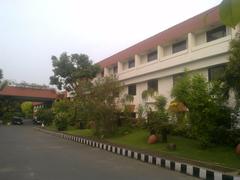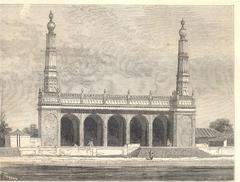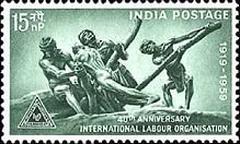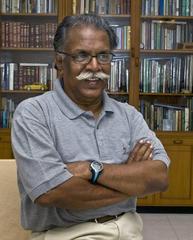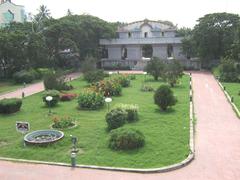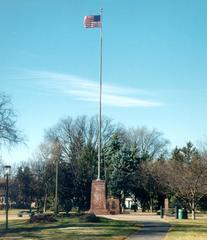Amir Mahal Chennai: Visiting Hours, Tickets, and Historical Guide
Date: 15/06/2025
Introduction
Amir Mahal, nestled in the vibrant Royapettah neighborhood of Chennai, is a distinguished emblem of the city’s royal legacy and multicultural heritage. Serving as the official residence of the Nawabs of Arcot since 1855, the palace stands as a testament to the Indo-Saracenic architectural style—a harmonious blend of Mughal, Islamic, and European influences crafted by renowned British architect Robert Chisholm in the late 19th century. Originally built as British administrative offices in 1798, Amir Mahal was later transformed into a regal abode for the Arcot royal family, who continue to play a significant role in Chennai’s social and cultural landscape (Live Chennai; Travel Guide Inc).
As a private royal residence with limited public access, Amir Mahal captivates architecture enthusiasts, heritage lovers, and cultural travelers. While regular visiting hours and ticketing are not available, the palace occasionally opens its doors during heritage walks, cultural festivals, or by prior appointment through heritage organizations or the Nawab’s office. The surrounding area, rich in historical landmarks like Chepauk Palace and Kapaleeshwarar Temple, further enriches a visit to this unique site (Tusktravel; New Indian Express).
This guide provides detailed insights into Amir Mahal’s storied past, architectural wonders, cultural resonance, and practical visitor information, ensuring that every visit is informed and respectful of the palace’s unique status. For those eager to delve deeper into Chennai’s royal heritage, resources like the Audiala app and curated heritage walks offer meaningful engagement with the city’s illustrious past.
Table of Contents
- Introduction
- Origins and Construction
- Architectural Highlights
- The Nawabs of Arcot and Their Legacy
- Historical Events and Notable Visitors
- Preservation and Heritage Status
- Visiting Hours, Tickets, and Tours
- Travel Tips and Nearby Attractions
- Accessibility and Visitor Etiquette
- Visuals and Media Recommendations
- Frequently Asked Questions (FAQ)
- Conclusion
- References
Origins and Construction of Amir Mahal
Amir Mahal is among Chennai’s most significant heritage buildings (Live Chennai). Its origins are intertwined with the Nawabs of Arcot, a prominent Muslim royal family who shaped the region’s political and cultural fabric during the 18th and 19th centuries. Initially, the Nawabs resided in Chepauk Palace, but after the British East India Company acquired their ancestral home in the mid-19th century (Navrang India), they were allotted Amir Mahal in 1855. The structure, first built in 1798 for British administration, was redesigned in 1876 by Robert Chisholm, embracing the Indo-Saracenic style that now defines its majestic presence.
Architectural Highlights
Style and Influences
Amir Mahal exemplifies Indo-Saracenic architecture, characterized by Mughal-inspired domes, Islamic arches, and European columns. Chisholm’s redesign incorporated traditional Indian courtyards, grand arched gateways, and ornamental detailing, making the palace a landmark in Chennai’s architectural heritage (Travel Guide Inc; Travel India).
Layout and Features
The palace is organized around a central courtyard, with lush gardens and interconnected halls. Its façade boasts a combination of red brick and white plaster, adorned with intricate stucco work, lattice screens (jali), and chhatris. Iconic domes and minarets crown the structure, creating a distinctive silhouette against the city skyline. Interiors feature high ceilings, carved woodwork, marble floors, stained-glass windows, and period furnishings. A private mosque within the complex highlights the religious and cultural heritage of the Arcot family.
The Nawabs of Arcot and Their Legacy
The Nawabs of Arcot were influential rulers of the Carnatic region under the Nizam of Hyderabad, shaping southern Indian history from the late 17th to the 19th century (New Indian Express). After losing political power to the British in 1855, the Nawabs retained significant social and religious influence. Amir Mahal became the family’s official residence and a symbol of their enduring legacy. Today, the palace remains home to the Prince of Arcot, Nawab Mohammed Abdul Ali, who upholds the tradition of interfaith harmony and community engagement (Wikipedia).
Historical Events and Notable Visitors
Amir Mahal has hosted a range of historic gatherings, diplomatic meetings, and religious celebrations. Eminent personalities such as Mahatma Gandhi, Jawaharlal Nehru, and Dr. Rajendra Prasad have visited the palace. The Nawab family’s commitment to social unity is reflected in events like the 1991 visit of the Kanchi Sankaracharya, symbolizing Chennai’s pluralistic ethos. The palace is also known for its culinary heritage, particularly Nawabi biryani, a favorite among dignitaries and celebrities (South First).
Preservation and Heritage Status
Recognized as a heritage building by local authorities, Amir Mahal benefits from ongoing conservation efforts focused on preserving its original features, including decorative plasterwork, wooden carvings, and historic furnishings (Live Chennai). The palace’s continued role as an active royal residence has helped maintain its authenticity and prevented the wear associated with mass tourism.
Visiting Hours, Tickets, and Tours
Public Access:
Amir Mahal is a private residence and not open for regular public tours. There are no standard visiting hours or ticketing systems.
Special Visits:
Visits can sometimes be arranged for dignitaries, researchers, or during select cultural events by special appointment. Interested visitors should contact the Prince of Arcot Endowments or local heritage organizations well in advance.
Heritage Walks:
Several Chennai-based heritage walks and guided tours include an external view of Amir Mahal, offering rich historical context (Tusktravel).
Travel Tips and Nearby Attractions
- Best Time to Visit: January to March offers pleasant weather, with minimal rainfall and moderate prices (Santorini Dave; Where and When).
- How to Reach: The palace is accessible via MTC buses, Chennai Metro (nearest station: Government Estate, ~2 km), taxis, and auto-rickshaws.
- Nearby Historical Sites:
- Chepauk Palace: The original residence of the Nawabs of Arcot.
- Kapaleeshwarar Temple: A renowned Dravidian temple.
- Government Museum, Egmore: Major collection of South Indian art and history.
- Marina Beach: Iconic urban beach nearby.
- Parking: Limited; public transport or taxis recommended.
Accessibility and Visitor Etiquette
Amir Mahal is an 18th-century structure and may have limited accessibility features. Visitors with mobility needs should communicate requirements when arranging visits. Modest dress is required—long trousers and covered shoulders/knees are recommended. Footwear removal may be requested in certain areas. Always follow host instructions and seek permission before photographing the palace.
Visuals and Media Recommendations
To enhance your understanding, explore high-quality images and virtual tours available on the official website and reputable travel portals. Maps of Royapettah, documentary videos, and interactive heritage guides can provide further context.
Frequently Asked Questions (FAQ)
Q: Can I visit Amir Mahal without an invitation?
A: No, entry is strictly by prior appointment or invitation due to its private status.
Q: Are there tickets for Amir Mahal?
A: No general tickets; entry is by special arrangement only.
Q: What are Amir Mahal’s visiting hours?
A: There are no regular hours. Visits are scheduled individually.
Q: Is photography allowed?
A: Photography is generally restricted inside the palace; always ask for permission.
Q: Is Amir Mahal wheelchair accessible?
A: Accessibility may be limited; communicate needs in advance when arranging a visit.
Conclusion
Amir Mahal stands as a living emblem of Chennai’s royal past, architectural grandeur, and multicultural spirit. Although interior access is limited, the palace’s historic significance, architectural beauty, and ongoing cultural relevance make it a focal point for heritage enthusiasts. Visitors are encouraged to engage with heritage organizations, attend special events, or participate in guided walks to appreciate Amir Mahal’s legacy and its place in Chennai’s historical landscape.
For updates, curated tours, and insider guides, download the Audiala app and follow us on social media. Begin your discovery of Chennai’s royal and multicultural heritage today!
References and Further Reading
- Live Chennai
- Travel Guide Inc
- Navrang India
- Tusktravel
- New Indian Express
- Wikipedia
- South First
- The Hindu
- Prince of Arcot Endowments
- Travel India
- Santorini Dave
- Where and When
